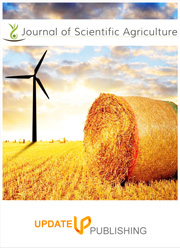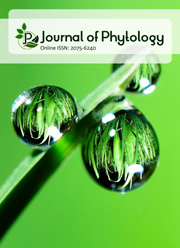Exogenous application of triazoles modifies growth and biochemical characteristics of Lycopersicon esculentum Mill. under water limited conditions
DOI:
https://doi.org/10.25081/jsa.2017.v1.57Keywords:
Drought, Lycopersicon esculentum, Triazole, Hexaconazole, TebuconazoleAbstract
The present investigation was carried out to find the morphological and biochemical variation in Tomato (PKM-1) seedlings under drought with triazole treatments. The pots were arranged in Completely Randomized Block Design (CRBD). The seedlings were allowed to grow up to 30 days with regular water irrigation. The water was irrigated by 4 Days Interval Drought (DID) and the control plants were regularly irrigated. The Triazole (Hexaconazole at 15 mg L-1 and Tebuconazole at 10 mg L-1) treatments imposed on 30, 40 and 50 Days After Sowing (DAS). The plant samples were collected on 40, 50 and 60 DAS. The plants were separated into root, stem and leaves for analysing the morphological variations and biochemical contents. Under drought condition the plant growth was increased in root length and decreased in shoot length, fresh weight and dry weight. In drought with treatments the root length, shoot length, total leaf area, fresh and dry weight were increased when compared to drought plants but it was lower than the control. Under drought condition the protein content was decreased but the proline, amino acid, total sugar and glycine betaine content were increased when compared to control plant. In drought with triazole treatments the protein content was increased and proline, amino acid, total sugar and glycine betaine were reduced when compared to drought treated plant, however it was lower than that of control. This study was concluded that under drought stress the plant reduced shoot length and protein content, and shows increased root length, proline, amino acid, total sugar and glycine betaine content, but drought with triazole treatments to increase root length, fresh and dry weight and protein content, reduced proline, amino acid, total sugar and glycine betaine content when compared to drought tomato plant



 .
.